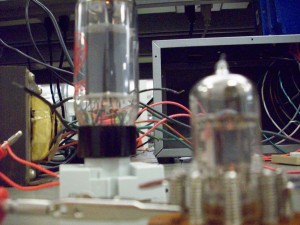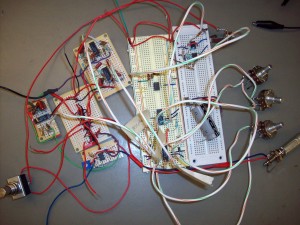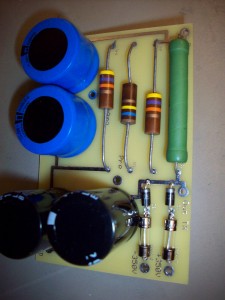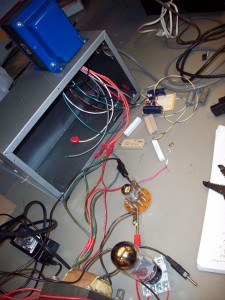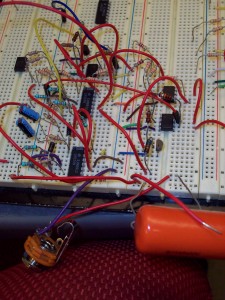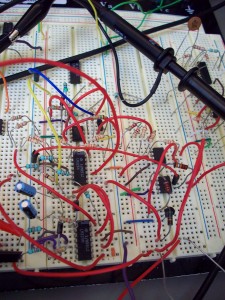home > projects > Analog Distortion Pedal
David led a team of three engineers to develop a novel analog effect he had conceptualized. He was solely responsible for the circuit design, part selection, and execution of the project.
The concept behind the project was to drive a power tube into more or less distortion based on the fundamental of the note played. For example, a low note on the guitar (lowest two strings) could cause more distortion than a higher note (upper two strings), or vice versa.
This is a complicated effect to create. The core of the design is a full Class A tube amplifier circuit that David designed using a 12AX7 preamp and a 6L6-GC Pentode power stage (driven at 350V). Creating more or less distortion through the power tube requires altering the gain of the guitar signal into the power stage.
In order to accomplish this, David designed three 8th order analog filters, to divide the input into 80-180,180-400, and 400-1200 Hz ranges. The three filtered signals were then rectified, sent through a user-controlled gain element, and summed to create a control voltage. This control signal corresponds to the desired gain through the tube. David designed a FET based Voltage Controlled Gain circuit to automatically modulate the gain.
Once the signal was sent through the power tube with varied gain, it must be scaled back by a complementary gain on the output (so that the guitar signal isn’t rapidly changing volume when you simply want it to distort more). David designed and created a feedback loop on the output, to adjust its envelope to match the envelope of the bypassed input signal. Of course, to do this properly, the power stage output had to be dropped back to a line level signal through a hefty bridged-T attenuation stage.
